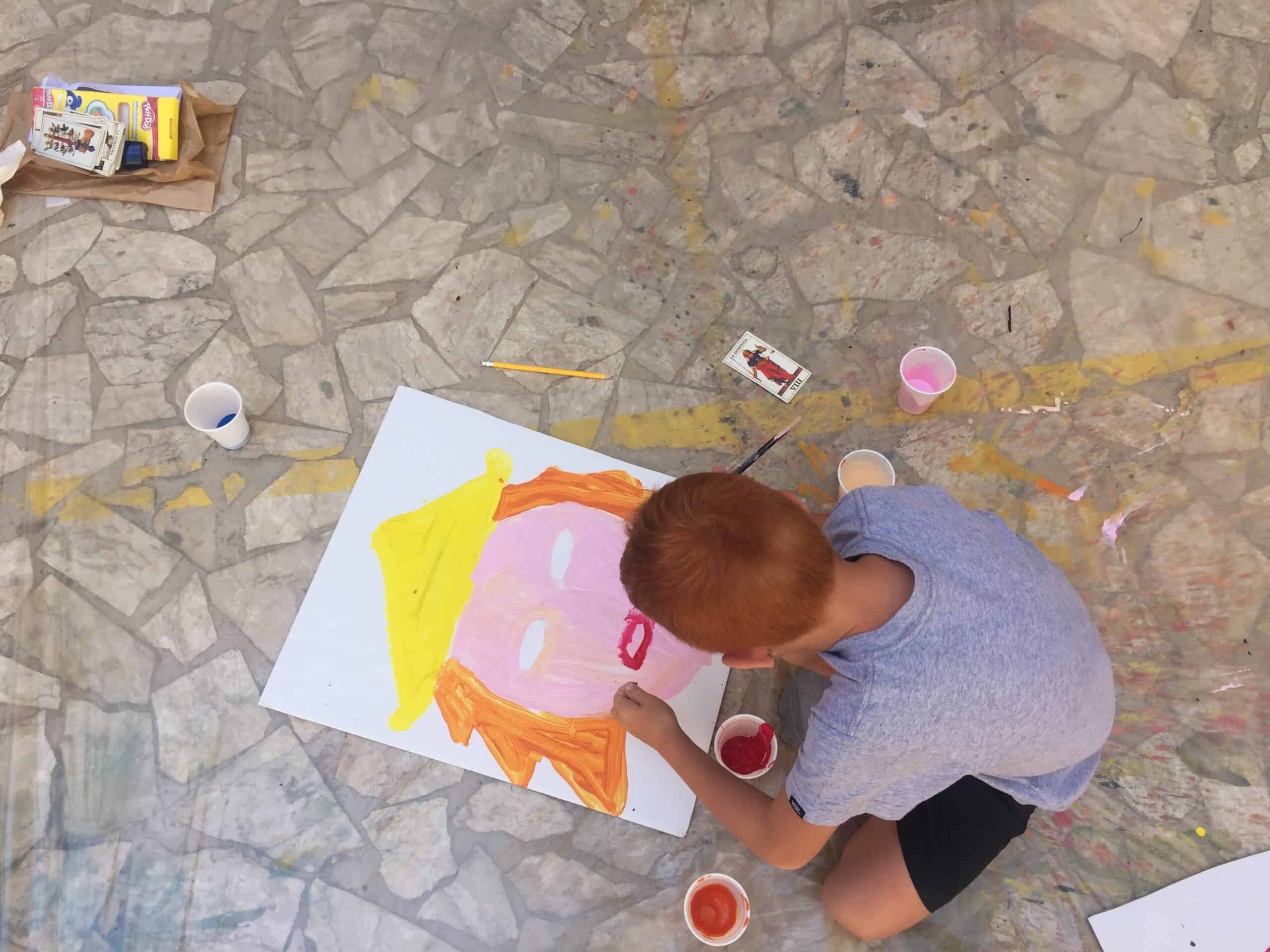Lo SPAZIO – Un’Esplorazione attiva | Corpo e Parola
as part of Caterina project, supported by the Con i Bambini foundation
in collaboration with Casa Morra – Archivi di Arte Contemporanea e Terra Mia Onlus
The project “Lo SPAZIO – Un’Esplorazione attiva | Corpo e Parola” (SPACE – An Active Exploration | Body and Word) was dedicated to the active exploration of space. Using a plurality of languages and instruments of representation/interpretation of reality, such as the body, images and words, it was decided to convey the story of the collection of Casa Morra, a museum-archive of contemporary art based in Naples, composed by artists who have represented the liberating power of art with gestures, expressions and energy flows in the space boundaries and beyond (Allan Kaprow, Luca Maria Patella, Shozo Shimamoto, John Cage, etc.).
The aim of the project was to create actions for a playful experience of the works exhibited in the Casa Morra, with the intention of leading each participant to a personal reworking and creative production of the contents observed and the works made. In the first phase, the activities were aimed at getting to know ourselves and the others, in order to build up a trusting relationship, with the help of visual input by drawing. The creation of the drawings was accompanied by a brief illustrated history of the portrait in modern and contemporary art (Van Gogh, Picasso, Duchamp, Basquiat, Ontani, Opalka…), by looking at digital images and paper, so as to make the children understand what inspires artists to create portraits of themselves or others. Afterwards, the children’s attention was directed to the museum-archive space (treasure hunting), through activities involving abstraction, such as mind mapping and oral storytelling, with the support of the visions of landscape and external reality of some great masters of contemporary art (Mario Schifano, Andy Warhol, Anselm Kiefer, etc.). By playing, the children explored the museum environment, inspired by Luca Maria Patella’s work “Alberi Parlanti”, which led them into the world of the forest, understood as a metaphorical space for imagination and for the restitution of a timeless time, a condition of origin in which humanity builds the adventure of its history. The adoption of narrative play allowed the boys and girls to walk freely in the space of the work, stand in a circle and try to imagine a story set in the Patella forest.To draw the outlines of the characters in the story, the children used their bodies or parts of their bodies as elements to outline. Once they had drawn the outlines of the characters’ figures, they then colored in the details of all the story elements (fairy painting). Under the direction of the teachers, the children moved through the forest, wearing masks and silhouettes depicting the main characters in the fairy tale, filmed by a video camera. By creating a work within the work, an installation within the installation, the children discovered the questioning of the subjective point of view in order to promote a wider and more complex collective vision of reality, in which it is precisely the diversity of points of view that makes each person unique (final storytelling).










